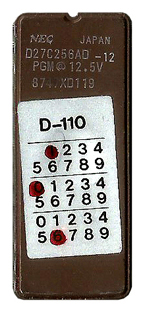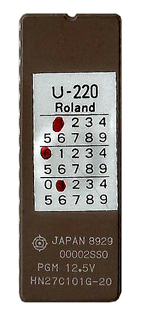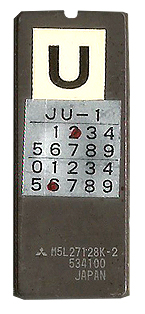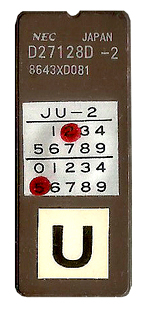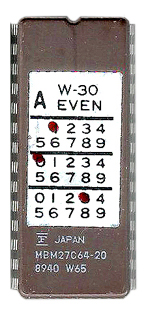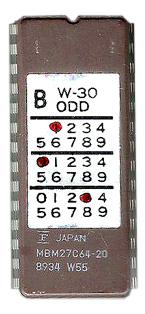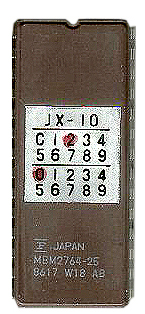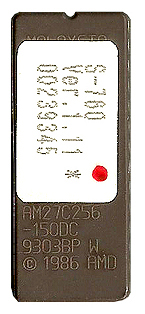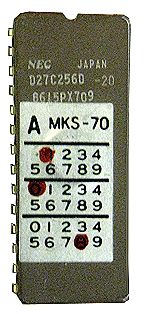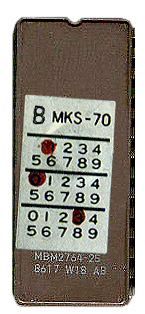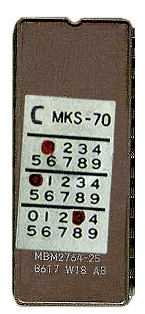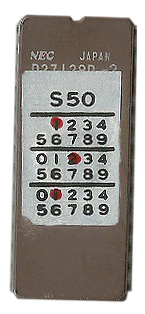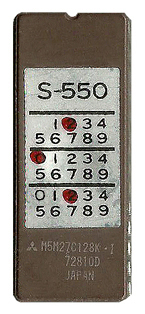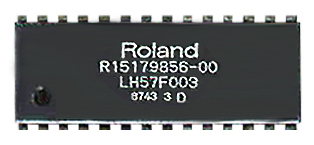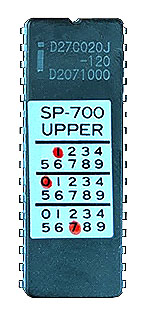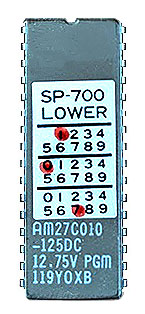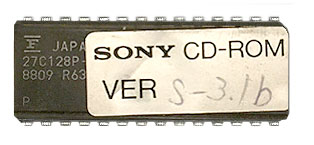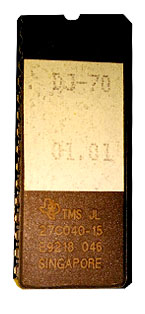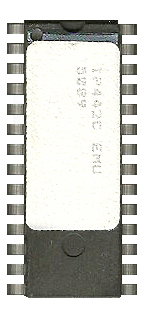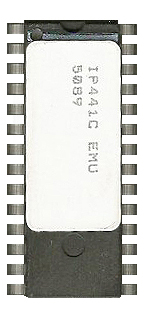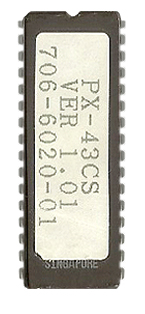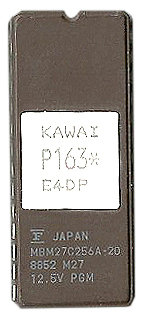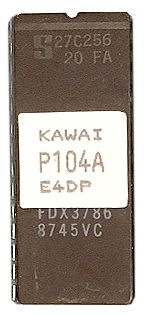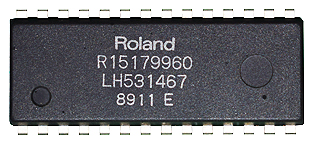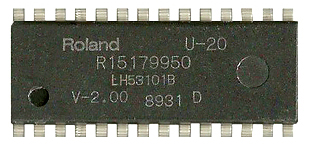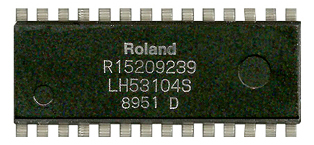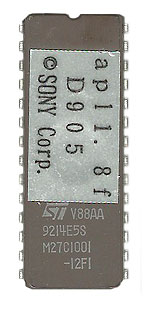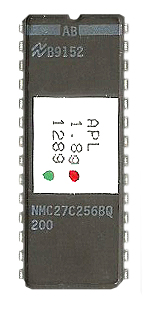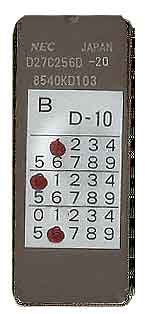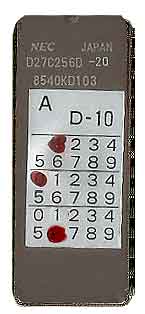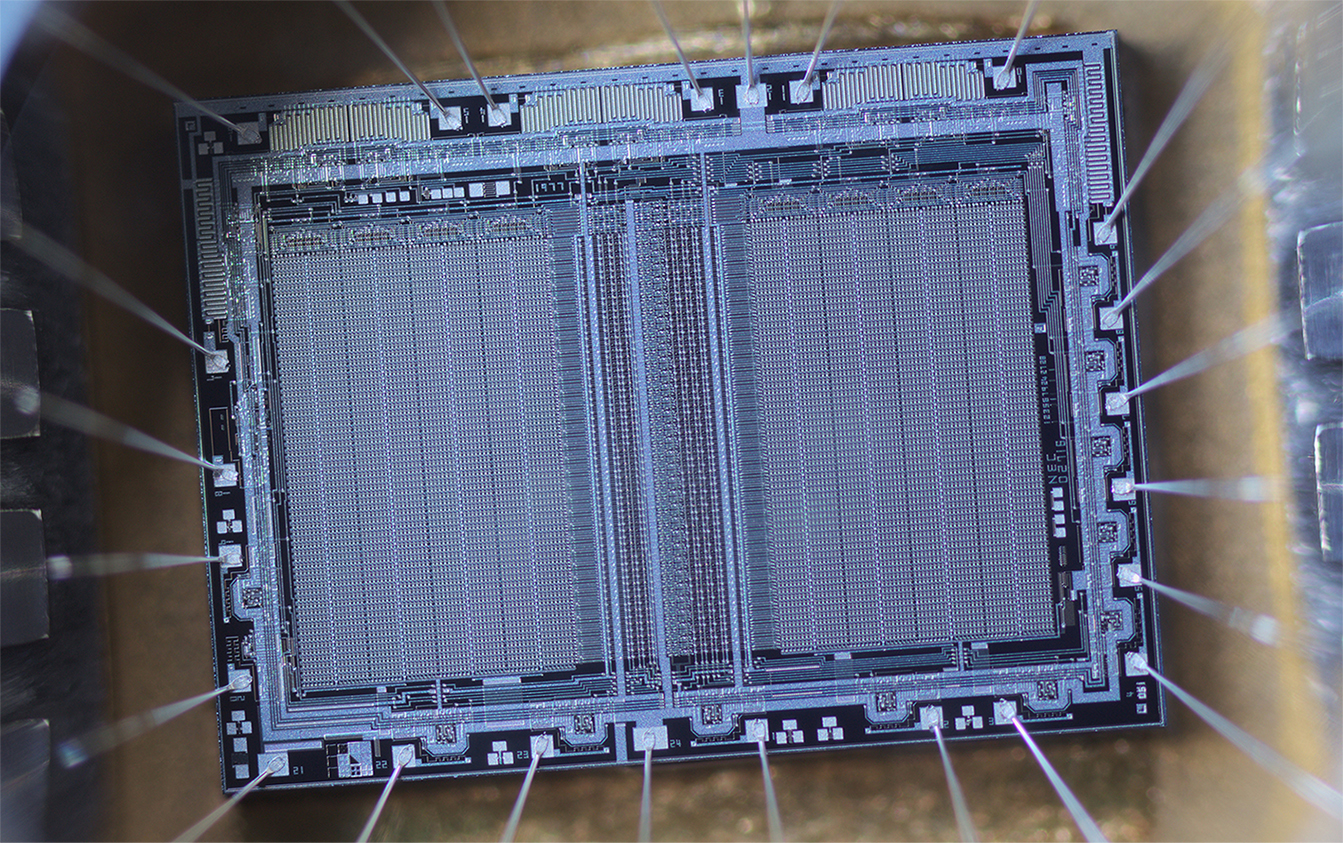* * * SYNTH & SAMPLER FIRMWARE * * *
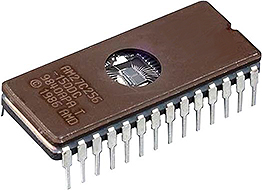
Why I Decided To Make Copies Of All My Synth And Sampler EPROM's
EPROM's are NOT permanent. They were designed to retain data for a minimum of 10 to 20 years. Some can still retain data after 30+ years. Synthesizers and samplers may suddenly stop working sometimes because the EPROM has failed. The electrons used to program the data will eventually lose their charge and leak out. Before this occurs, making a copy of an EPROM is easy if you have an EPROM burner or have a friend who owns one. Simply remove the existing EPROM, copy the firmware code residing on it, burn a replacement copy onto a new, blank EPROM IC using the original factory firmware code and then plug it in place of the old EPROM
In most cases, EPROM's with a clear quartz window are plugged into an IC socket and can be easily removed and replaced. Usually, there is a label on top of the EPROM which covers a clear quartz window. This is to protect it from UV light and prevent accidental erasure. EPROM's without a clear quartz window are called OTP EPROM's (One‑Time Programmable). On some synths and samplers, the firmware is installed on a MASK ROM. Just like OTP EPROM's, these do not have a clear quartz window. For Roland synths, MASK ROM's usually have the word "Roland" silkscreened on the top
If your synthesizer or sampler has an OTP EPROM installed, then you are in the same boat as synth and sampler owners with clear quartz window EPROM's. OTP EPROM's are also susceptible to electron loss over time. These pose a greater challenge to replace because they are usually soldered directly onto the circuit board as a cost cutting measure. If your synthesizer or sampler has a MASK ROM installed, then the firmware data is permanently manufactured into the IC and there is no danger of the electrons leaking out because it is permanent storage, just like a ROM IC. The real bummer is, MASK ROM's are always soldered onto to the circuit board which makes it nearly impossible to upgrade to a newer firmware version
If you don't have any experience working with EPROM's, I found that it's not so intimidating after all. In fact, with no previous EPROM experience, I found it quite easy and inexpensive. I've put together a Quick Start Guide for anyone just starting out. There are recommended parts to buy and a detailed process of how to duplicate synth and sampler EPROM's. From what I've read on the Internet, it's perfectly legal to post this firmware code for downloading since you need to own the synthesizer or sampler hardware to use them. I'm mystified as to how vultures on eBay are able to sell EPROM's of copyrighted firmware code for $80 a pop. It doesn't seem legal. For less than $80, you can buy an EPROM reader, some blank EPROM's and backup all of your synths and samplers yourself
 EPROM Quick Start Guide
EPROM Quick Start Guide
EPROM's are NOT permanent. They were designed to retain data for a minimum of 10 to 20 years. Some can still retain data after 30+ years. Synthesizers and samplers may suddenly stop working sometimes because the EPROM has failed. The electrons used to program the data will eventually lose their charge and leak out. Before this occurs, making a copy of an EPROM is easy if you have an EPROM burner or have a friend who owns one. Simply remove the existing EPROM, copy the firmware code residing on it, burn a replacement copy onto a new, blank EPROM IC using the original factory firmware code and then plug it in place of the old EPROM
In most cases, EPROM's with a clear quartz window are plugged into an IC socket and can be easily removed and replaced. Usually, there is a label on top of the EPROM which covers a clear quartz window. This is to protect it from UV light and prevent accidental erasure. EPROM's without a clear quartz window are called OTP EPROM's (One‑Time Programmable). On some synths and samplers, the firmware is installed on a MASK ROM. Just like OTP EPROM's, these do not have a clear quartz window. For Roland synths, MASK ROM's usually have the word "Roland" silkscreened on the top
If your synthesizer or sampler has an OTP EPROM installed, then you are in the same boat as synth and sampler owners with clear quartz window EPROM's. OTP EPROM's are also susceptible to electron loss over time. These pose a greater challenge to replace because they are usually soldered directly onto the circuit board as a cost cutting measure. If your synthesizer or sampler has a MASK ROM installed, then the firmware data is permanently manufactured into the IC and there is no danger of the electrons leaking out because it is permanent storage, just like a ROM IC. The real bummer is, MASK ROM's are always soldered onto to the circuit board which makes it nearly impossible to upgrade to a newer firmware version
If you don't have any experience working with EPROM's, I found that it's not so intimidating after all. In fact, with no previous EPROM experience, I found it quite easy and inexpensive. I've put together a Quick Start Guide for anyone just starting out. There are recommended parts to buy and a detailed process of how to duplicate synth and sampler EPROM's. From what I've read on the Internet, it's perfectly legal to post this firmware code for downloading since you need to own the synthesizer or sampler hardware to use them. I'm mystified as to how vultures on eBay are able to sell EPROM's of copyrighted firmware code for $80 a pop. It doesn't seem legal. For less than $80, you can buy an EPROM reader, some blank EPROM's and backup all of your synths and samplers yourself
 EPROM Quick Start Guide
EPROM Quick Start Guide
 I want to send special thanks out to Guy Wilkinson (supersynthprojects.com) and Fred Vecoven (vecoven.com) for all the high‑tech info they have supplied to help me learn about this process. I could not have done it without their expert input!
I want to send special thanks out to Guy Wilkinson (supersynthprojects.com) and Fred Vecoven (vecoven.com) for all the high‑tech info they have supplied to help me learn about this process. I could not have done it without their expert input!
A useful "Remove All Notes Off" modified version is at this link
27C040‑15 [TEXAS INSTRUMENTS]
27C040‑15 [TEXAS INSTRUMENTS]
LH532HV0 [ROLAND ‑ OTP]
+ Lower Module Board IC #1 (Left Side - ROM B v2.10)
+ Upper Module Board IC #1 (Right Side ‑ ROM C - v2.10)
MBM2764‑25 [FUJITSU]
MBM2764‑25 [FUJITSU]
+ Module Board B IC #1 (ROM B - v1.06)
+ Module Board A IC #1 (ROM C - v1.06)
MBM2764‑25 [FUJITSU]
MBM2764‑25 [FUJITSU]
Note: Before burning, manually change the Vpp Voltage values
See the "Read Me" file in the *.ZIP download
P27128A‑2 [INTEL ‑ OTP]
(On later models, both IC's soldered on PCB - Read This)
LH57F003 [ROLAND ‑ OTP]
LH57F007 [ROLAND ‑ OTP]
Note: Unlike most synths & samplers, these EPROM's are different sizes
IC54 Upper = 2 Megabit [256 K x 8-Bit]
IC55 Lower = 1 Megabit [128 K x 8-Bit]
AM27C010‑125DC LOWER [INTEL - OTP]
LH531467 [ROLAND ‑ MASK ROM]
then visit dbwbp.com
LH53101B [ROLAND ‑ MASK ROM]
LH53104S [ROLAND ‑ MASK ROM]
then visit dbwbp.com
Bonus Material: Original 4‑page Gatefold Sales Brochure here
AM27C512‑255DC [AMD]


